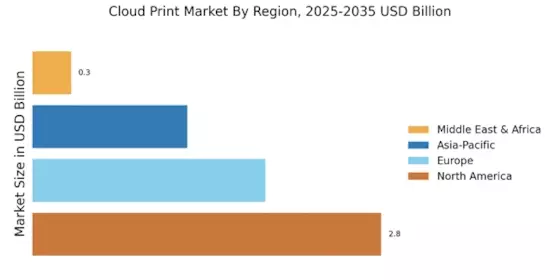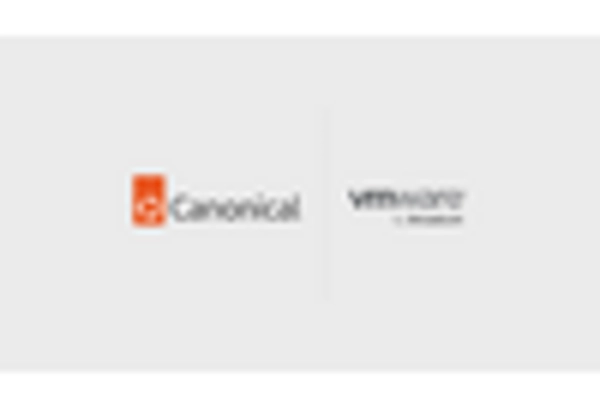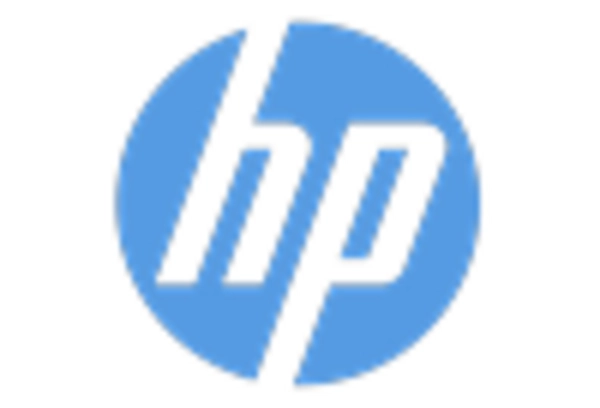Growing Emphasis on Sustainability
Sustainability is becoming an essential consideration for organizations, influencing their choices in the Cloud Print Market. As environmental concerns gain prominence, businesses are increasingly seeking printing solutions that align with their sustainability goals. Cloud printing offers a more eco-friendly alternative by reducing paper waste and energy consumption associated with traditional printing methods. Data indicates that companies adopting cloud printing solutions can reduce their carbon footprint by up to 50%. This growing emphasis on sustainable practices is prompting organizations to invest in cloud-based printing technologies that not only meet their operational needs but also contribute to their corporate social responsibility objectives. Consequently, the Cloud Print Market is likely to benefit from this shift towards greener printing solutions.
Integration with Advanced Technologies
The integration of advanced technologies is a pivotal factor driving the Cloud Print Market. Innovations such as artificial intelligence, machine learning, and data analytics are being increasingly incorporated into cloud printing solutions. These technologies enable enhanced functionality, such as predictive maintenance and automated workflows, which can significantly improve operational efficiency. For instance, AI-driven analytics can provide insights into printing patterns, allowing organizations to optimize their printing processes. This technological evolution not only enhances user experience but also positions cloud printing as a forward-thinking solution in the competitive landscape. As businesses continue to embrace these advancements, the Cloud Print Market is likely to expand, catering to the evolving needs of modern enterprises.
Rising Demand for Remote Work Solutions
The Cloud Print Market is experiencing a notable surge in demand for remote work solutions. As organizations increasingly adopt flexible work arrangements, the need for efficient printing solutions that can be accessed from various locations becomes paramount. According to recent data, approximately 70% of companies are now offering remote work options, which has led to a corresponding rise in the utilization of cloud-based printing services. This trend indicates that businesses are seeking to streamline their operations and enhance productivity by enabling employees to print documents securely from any device. Consequently, the Cloud Print Market is likely to witness significant growth as more enterprises invest in technologies that facilitate remote printing capabilities.
Cost Efficiency and Resource Optimization
Cost efficiency remains a critical driver within the Cloud Print Market. Organizations are increasingly recognizing the financial benefits associated with cloud printing solutions, which often reduce the need for extensive on-premises infrastructure. By leveraging cloud-based services, companies can minimize operational costs related to maintenance, hardware, and consumables. Data suggests that businesses can save up to 30% on printing costs by transitioning to cloud solutions. This potential for cost savings, coupled with the ability to optimize resource allocation, positions cloud printing as an attractive option for organizations aiming to enhance their bottom line. As a result, the Cloud Print Market is poised for growth as more businesses seek to implement cost-effective printing strategies.
Enhanced Collaboration and Workflow Efficiency
Enhanced collaboration and workflow efficiency are driving forces within the Cloud Print Market. As teams become more distributed and projects increasingly require input from multiple stakeholders, the need for seamless collaboration tools becomes critical. Cloud printing solutions facilitate this by allowing users to share documents and print remotely, thereby streamlining workflows. Research indicates that organizations utilizing cloud printing can improve their project turnaround times by as much as 25%. This capability not only fosters teamwork but also enhances overall productivity. As businesses continue to prioritize collaborative work environments, the demand for cloud printing solutions that support these objectives is expected to rise, further propelling the growth of the Cloud Print Market.


















Leave a Comment